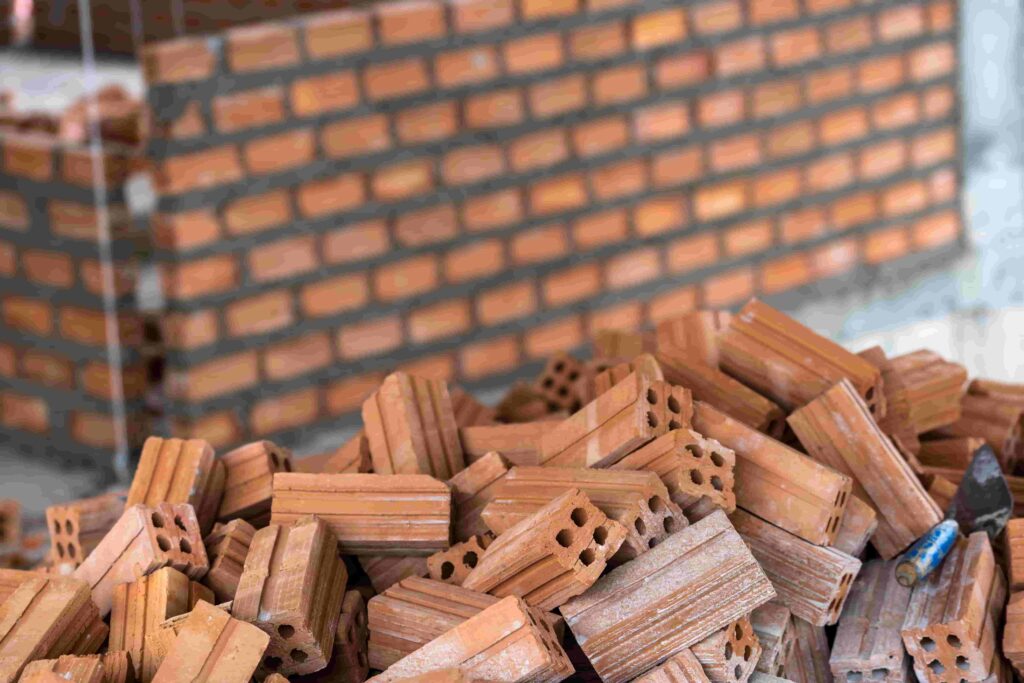
Facebrick is more than just an aesthetic masonry finish—it’s a fundamental building component that demands detailed attention during the estimating process. For cost estimators, accurately calculating facebrick quantities and layout requirements is essential for delivering competitive and data-driven bids. At TrueBidData.com, we apply digital strategies and structured takeoff systems to handle facebrick estimating with precision, transparency, and confidence.
Understanding Facebrick in Estimating
Facebrick refers to the visible, outer layer of masonry brickwork, usually chosen for its texture, color, durability, and architectural appeal. Unlike structural CMU or backup walls, facebrick is measured and priced not just for function, but for finish quality, patterning, and labor complexity.
Estimators must factor in:
- Brick dimensions (modular, utility, king-size)
- Bond pattern (running, stack, Flemish, English)
- Joint widths and mortar usage
- Waste percentage for cuts and breakage
- Accessories (weep vents, ties, lintels, flashing)
Each of these variables influences material quantities, labor productivity, and pricing. This is why a standardized, data-rich facebrick takeoff is essential.
Digital Takeoff Tools for Facebrick Accuracy
At True Bid Data, we use advanced PDF measurement software and custom workflows to extract precise facebrick quantities directly from architectural elevations and wall sections. Key features of our system include:
- Auto-recognition of facebrick areas on elevations
- Smart filters for separating backup wall from veneer
- Built-in calculation of net vs. gross wall surface
- Waste factors tied to specific bond patterns
This automation reduces human error, accelerates turnaround time, and improves cost visibility for clients bidding on commercial and residential masonry projects.
Applying Unit Cost Analysis for Facebrick
Unit cost estimating for facebrick involves calculating:
- Cost per brick (including delivery and markup)
- Mortar per square foot (based on joint thickness)
- Wall ties per square foot or by height interval
- Labor productivity in SF/day or bricks/hour
For example, a running bond with modular facebrick might average 6.55 bricks/SF with standard mortar joints. Factoring in a 10% waste margin and regional labor rates, the estimator can quickly forecast accurate wall veneer costs. True Bid Data templates tie these rates directly to quantity takeoffs, making updates and alternates easy to manage.
Masonry Labor Rates for Facebrick Installation
Different facebrick patterns and installation details affect labor time significantly. For example:
- Simple running bond = higher productivity
- Decorative patterns (e.g., herringbone or basketweave) = lower productivity
- Corners, returns, and lintels = added labor complexity
- Scaffolding or elevated installs = slower pace
We use production multipliers and union/non-union labor adjustments to align our estimates with local market conditions, ensuring our clients never underbid or overestimate their masonry labor scope.
Data-Driven Brickwork Takeoff Outputs
Our facebrick takeoff reports at True Bid Data are formatted in CSI Division 04 standards and include:
- Total SF of facebrick veneer per elevation
- Breakdown by bond pattern or wall type
- Mortar and tie requirements
- Cut/waste analysis
- Supporting drawing references
This level of clarity ensures that general contractors, subcontractors, and project owners all understand the basis of the estimate—and can align scope responsibilities without confusion.
Integrating Facebrick with Revisions
Facebrick takeoffs often change between schematic, DD, and CD phases. We help clients manage revisions by:
- Comparing changes in elevation dimensions or layout
- Tracking deleted or added walls
- Recalculating quantities with version control
- Adjusting costs based on material changes (e.g., switching from modular to king-size)
By syncing drywall takeoff with BIM and RFIs, our clients avoid scope drift and unexpected change orders during field execution.
Challenges and Common Pitfalls in Facebrick Estimating
Accurate facebrick takeoff requires vigilance against several estimating pitfalls, such as:
- Ignoring wall penetrations like windows and vents
- Underestimating waste in complex patterns
- Missing special shapes (bullnose, corner bricks)
- Misreading scale on elevations
- Overlooking different bond patterns across building zones
At True Bid Data, we apply QA workflows and drawing markups to ensure complete scope capture. Every facebrick quantity is backed by drawing annotations and quantity logic.
Visit True Bid Data to Master Facebrick Estimating
Facebrick takeoffs are a blend of art, math, and materials science. For estimators, the stakes are high: bid too low and risk loss; bid too high and lose competitiveness. With TrueBidData.com, you gain a data-powered approach that delivers accuracy, speed, and traceability in every masonry estimate.
Whether you’re bidding schools, retail centers, or residential developments, rely on True Bid Data for professional facebrick estimating that makes every square foot count. Explore more at True Bid Data.




